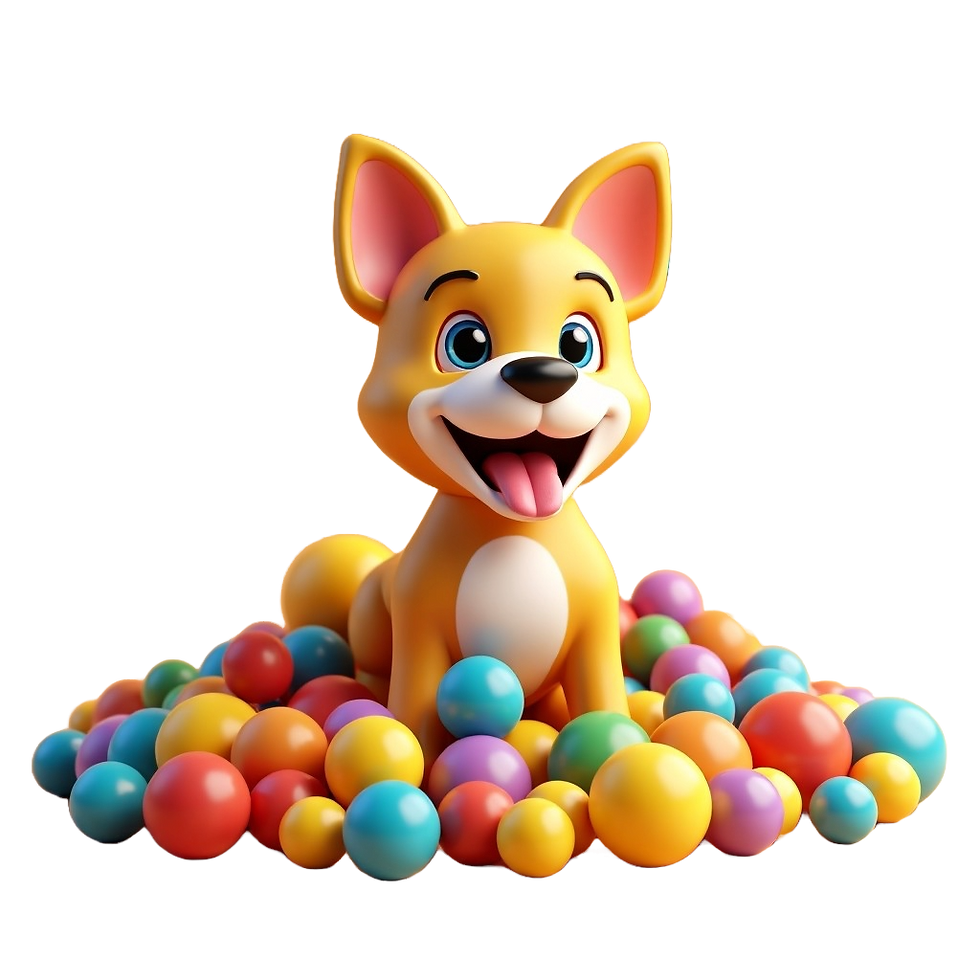Teaching computers to see: how image recognition works
- Frobo

- May 27, 2025
- 3 min read
Updated: Aug 11, 2025
Hello AI Explorers!
Welcome back to our AI adventure! Now, we're going to explore one of the most fascinating abilities of artificial intelligence: how computers learn to "see" and understand images. Have you ever wondered how your phone can recognise faces in photos or how self-driving cars know when to stop? It's all thanks to computer vision and image recognition!
Your eyes vs. computer "eyes"
👁️ How you see things
When you look at a picture of a dog, your brain instantly recognises it's a dog. You don't think, "Hmm, that's a furry thing with four legs, a tail, and ears... must be a dog!" Your brain just knows!
Why? Because you've seen thousands of dogs in your life, in books, in movies, and in real life. Your brain has learned what dogs look like in all sorts of positions, colors, and sizes.
🤖 How computers see things
For computers, seeing is MUCH different:
A computer sees an image as a grid of tiny colored dots called pixels
Each pixel has a number value representing its color
The computer doesn't "see" a dog—it sees thousands of numbers!
The challenge is teaching computers to go from "here's a bunch of numbers" to "that's a dog!"

The computer vision learning journey
Step 1: Pixels and numbers
Imagine looking at the world through a grid. Each square in the grid is a pixel with a color value. For a computer, a simple black and white image might look like this:
0 0 0 0 0 0 0 0
0 1 1 0 0 1 1 0
0 1 1 0 0 1 1 0
0 0 0 0 0 0 0 0
0 1 0 0 0 0 1 0
0 0 1 1 1 1 0 0
0 0 0 0 0 0 0 0Where 0 = white pixel and 1 = black pixel. (Can you tell what this might be? It's a simple smiley face!)
Step 2: Finding patterns
The computer needs to learn which patterns of pixels represent different objects. It does this through something called "feature detection":
Edges: Where does one color change to another?
Textures: Are there repeating patterns?
Shapes: How do the edges connect to form shapes?
Step 3: Learning from examples
Here's where the magic happens! We show the computer LOTS of examples:
"This is a picture of a dog"
"This is another dog"
"This is not a dog, it's a cat"
After seeing thousands of examples, the computer starts to understand the patterns that make something a "dog" versus a "cat."
The secret ingredient: Neural Networks
Image recognition uses a special type of AI called neural networks, which are inspired by how our brains work!
How Neural Networks learn to see:
Layer 1: Detects simple features like edges and colors
Layer 2: Combines those to find shapes like circles and squares
Layer 3: Assembles shapes into parts like "eye" or "paw"
Layer 4: Puts everything together to recognize "dog" or "cat"
Fun Fact: Some advanced neural networks have hundreds of layers and can learn from millions of images!
Image recognition in your life
You might not realise it, but computer vision is all around you:
Photo Apps: Automatically finding faces and smiles
Augmented Reality: Adding fun filters to your face on social media
Medical Helpers: Helping doctors spot diseases in X-rays
Safety Systems: Cars that can detect pedestrians
Homework Helper: Apps that solve math problems from a photo
Try this at home: train your own classifier!
Want to see how computers learn to recognise images? Try this simple activity:
Get 10 index cards
Draw a simple smiley face on 5 cards
Draw simple frowny faces on the other 5
Mix them up and give them to a friend who hasn't seen them
Ask your friend to sort them into "happy" and "sad" piles
Your friend is doing exactly what an image classifier does! They're learning from examples and then making decisions about new images.
When computers make mistakes
Computers aren't perfect at seeing! They can make funny mistakes:
Mistaking a chihuahua for a blueberry muffin
Thinking a person is part of the background
Not recognising an object from a strange angle
Scientists are always working to make computer vision better. One day, computers might see even better than humans!

The future of computer vision
Imagine what we could do with even better computer vision:
Helping blind people "see" through special glasses
Finding lost people in large crowds
Protecting endangered animals by watching for poachers
Robots that can help around the house by recognising objects
Questions for young explorers:
What would you teach a computer to recognise if you could?
How many examples do you think a computer needs to learn what a bicycle looks like?
Can you think of ways computer vision might help at your school?
Stay curious and explore!
Ribbit, ribbit,
// Frobo



Comments